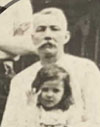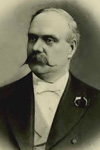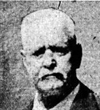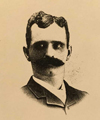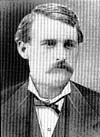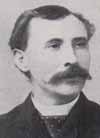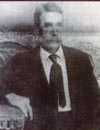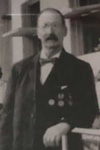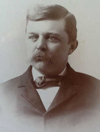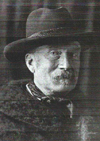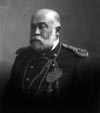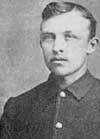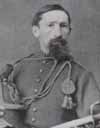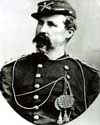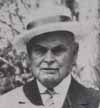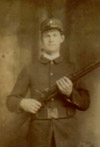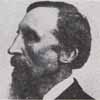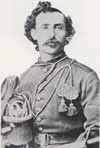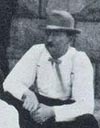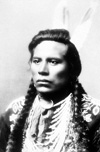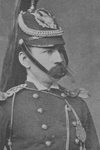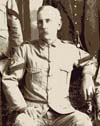James C. Blair (left) was born in Camden, New Jersey, on December 18, 1850. He was a Private in Company K who was on detached service at Fort Abraham Lincoln during the Battle of the Little Bighorn, charged with tending the company’s property and garden.
Michael Peter Madden died in California, Missouri, on December 18, 1883, and was buried in the California City Cemetery there. He was the Saddler for Company K who was wounded during the hilltop fight while getting water for the wounded, but he was not awarded a Medal of Honor for his actions. Dr. Henry Porter (right) amputated his leg in the field.
William Henry Davenport died on December 18, 1904, in Missoula, Montana, and was buried at the Missoula Cemetery. He was a Private in Company B who was with the pack train and in the hilltop fight.
William G. Hardy (left) was born on December 20, 1849, on Staten Island, New York. He was a bugler for Company A and fought in both the valley and hilltop fights during the battle.
Hiram Wallace Sager died in Spokane, Washington, on December 21, 1907, and was buried at Greenwood Memorial Terrace there. He was a Private in Company B who was with the pack train and in the hilltop fight.
Thomas Gordon (left) died on December 21, 1935, in Chelsea, Massachusetts, and was buried in the Swan Dale Cemetery in Mendon, Massachusetts. He was a Private in Company K who participated in the hilltop fight.
Luther Rector Hare (left) died on December 22, 1929, of throat cancer in Walter Reed Hospital in Washington, D.C, and was buried in Arlington National Cemetery on December 26, 1929. He was an 1874 graduate of the United States Military Academy at West Point. He served as the Second Lieutenant of Company K and participated in the valley and hilltop fights during the battle.
Johann Michael Vetter was born in Hessen, Germany, on December 23, 1853. He was a Private in Company L who was killed during the battle.
Joseph Carroll died on December 23, 1904, in Danville, Vermilion County, Illinois, and was buried in the National Cemetery there. He was a Private in the Band so he was not present at the battle.
John James Carey died in Benton City, Washington, on December 23, 1929, and was buried in Pioneer Cemetery in Centralia, Lewis County, Washington. He was a Private in Company B who was with the pack train and in the hilltop fight.
Martin Personeus, who also used the alias Michael Conlan, died in Carlinsville, Illinois, on December 24, 1889. He was a Private in Company L who was on detached service tending the garden at Fort Abraham Lincoln during the Little Bighorn campaign.
Giovanni Martini (left) died on December 24, 1922, in Brooklyn, New York, and was buried in Cypress Hills National Cemetery there. He was the Trumpeter for Company H who brought the famous “be quick” note to Benteen.
